Week 8. Metabolism of Mice and Men, Birds and Elephants
Relative VO2, Thermodynamics, and Lifespan
Birds, mice, and other tiny mammals use much more O2 than humans do (adjusted for body weight).
This greater metabolic rate converts a greater proportion of “Total Energy Out” into “Wasted Heat” and is especially critical for surviving cold temperatures.
In order to sustain a very high rate of metabolic combustion and heat production compared to humans, birds must eat up to 17x or more the quantity of energy than a human, relatively. Despite eating so many calories, tiny animals do not gain mass because they dissipate heat extremely quickly.
This explains why a bird ‘going to bed’ on an empty stomach dies over a cold bitter night… lack of calories reduce heat production.
Conversely, the bodies of huge animals like elephants conserve heat because their size prevents rapid radiation of energy. Hence, the elephants huge ears serve as radiators to dissipate the heat.
Read on to understand the true nature of calories, relative VO2, metabolism, and weight loss.
1. Of Mice, Men, and Other Animals
Of Mice and Men and Other Animals: Relative VO2 Made Simple by Comparing Animals
To compare animals and humans – on an even playing field – we divide VO2 per minute by an animal’s body weight. This gives us relative VO2.
-
Relative VO2 = VO2 per minute/body weight
Assume you weigh 65kg. (143lb) Assume your absolute VO2 at rest (1 met) is 1/3 liter per minute. (0.333 L =333ml)
-
Relative VO2: 333ml/min over 65kg = 5.12 ml/min per kg.
Mice, and tiny animals use relatively way more oxygen than humans do.
Notice the Siberian husky’s relative VO2 max is much greater compared to a horse.
Compare more animals:
I adjusted the figures to make them easier to conceive – in color.
Calculations for a Mouse and Elephant below:
A mouse weighs 25 g or .00025 kg.
Absolute VO2 at rest = 68ml/min.
-
Rel. VO2: 68ml/min over .00025kg = 27.32 ml/min per kg.
-
This is approximately 5x the amount a human uses at rest.
So what makes a ‘fast metabolism’ or metabolic rate?
- An animal with a fast metabolism is one that has a higher relative VO2 at rest.
- Using oxygen faster and more explosively is a more accurate way of perceiving a higher metabolic rate.
- As always presented throughout this semester, think Combustion of Fuel in the Mitochondria IS Metabolism.
The next two sections will help you concretely visualize using oxygen more explosively. But first the elephant calculation, below.
An elephant weighs 3800kg.
Absolute VO2 at rest = 4.5 Liters/min or 4500 ml/min
-
Rel. VO2: 4500ml/min over 3800kg = 1.18 ml/min per kg.
-
This is 23% of a human’s O2 consumption per minute when adjusted for body weight.
-
Despite its lower relative VO2 an elephant radiates a greater absolute volume of heat compared to smaller animals because of its size. The ears of an elephant are huge radiators that dissipate the heat.
Summary
Huge animals like elephants with slower metabolisms generally have a lower relative VO2 per minute.
And vice versa, animals with faster metabolisms use more oxygen relatively.
2. The Biological Calorie. Thermodynamics of Weight Loss Simplified
The Biological Calorie. Thermodynamics of Weight Loss Simplified
People with slow metabolisms are ‘Fireless Cookers’.
A 1918 writer named Lulu Hunt Peters called overweight people ‘Fireless Cookers’. Her nephew drew the illustration. This type of metabolism results in:
- Less calories wasted as heat.
- More calories saved as mass. (weight gain)
Fireless Cookers are people who do not convert as much of their caloric intake into heat compared to ‘thinner’ people – so people with slower metabolisms save more of what energy comes in as mass.
- In other words, certain people radiate less heat compared to people with faster metabolisms. Hence the term Fireless Cookers. Tepid is perhaps a more precise term.
The difference is like comparing a florescent light bulb to a standard incandescent light bulb. The same quantity of energy can ‘go into’ each bulb (like the same quantity of calories going into two humans), but one wastes more heat – and this is the ‘too hot to touch’ incandescent bulb.
- Energy put into a light bulb converts into two forms – light and heat. The bulb that wastes more heat produces less light.
- Energy from food (calories) converts into two forms – heat and mass.*
- If your body suddenly converted more of its energy input as heat, then you would convert or store less of it as mass.
- If 100% of the calories you ate were converted only into heat, you’d fail to save mass and lose all your weight.
* For practical purposes kinetic energy or exercise is not considered here, but discussed in class.
The calories you eat are NOT treated the same way by your body as was originally obtained by science*.
*A bomb calorimeter combusts food within a chamber and produces only one form of energy… heat – as absorbed and measured by water’s increase in temperature.
- Your body transforms the energy in (calories) into two ‘out forms’…. heat wasted AND mass.
- If and when the percentage of heat wasted increases, you lose mass. This is an irrefutable law of thermodynamics – even if you eat the same amount of calories ‘now’ compared to a ‘previous time’. Energy in is STILL equal to energy out, but more goes out into one form and less goes out into another – keeping all things equal. How this occurs through diet manipulation and other factors is discussed in class.
Consider a bird, which must eat enough food to avoid freezing to death overnight.
This bird’s death may have resulted essentially from lack of a single meal needed before roosting on a cold bitter night.
When a bird eats its typical daily allotment of energy (to what to a human is eating days worth of food) most of the energy does not convert to weight, but is instead wasted as heat just to keep it warm. This is why birds and mice must eat as much up to half their body weight or more during the winter.
In short, the cells of animals with faster metabolisms consume oxygen ‘faster and more explosively’ than a slower metabolism, exemplified in the video below.
Example of using O2 faster and more explosively in a ‘cell space’ by combustion of charcoal with liquid oxygen:
For a greater perspective of extreme cold – i.e. its demand and effects on dogs and humans during dog sled racing and cold weather camping.
Thoughts from Mushers of the Iditerod Race and Will Steger.
- Mushers are known to lose 20 or more pounds in the week and a half of the race because of the
incredible toll on the body, but also because eating is such a challenge. Read: Dietitian Studies Succulent Menus of Competitors
- Each 50-pound canine consumes about 12,000 calories daily (typically 60 percent fat and 40 percent carbohydrate and protein).
- “In my rookie race I was shocked by the intensity of my hunger, something I never encountered in the shorter 200 or 300 mile races. My body was so insistent on being fed that I could barely think or function until I had taken care of my hunger. I would wake up out of a dead sleep and need to rush to get food into me.”
- “We’ll still eat lots of butter, cheese and peanut butter in the deep cold of 40-below,” Steger said. “That’s when you really need fats to fuel energy, if only to heat your sleeping bag to 72 degrees at night. Read: Musher Has Goals Down Cold
- During the first few days of racing, sled dogs draw energy from glycogen stored inside muscle cells. But instead of depleting glycogen stores and tiring the muscles, the animals suddenly switch to a glycogen-sparing metabolism. They start drawing energy from sources outside of the muscles. Davis suggests that the muscle cells start extracting fat directly from the blood and somehow transport this fat across the cell membranes and into the cells, where it can be burned as fuel. Read: Learning Fat-Burning Secrets from Sled Dogs
And more from Lulu Hunt Peters in 1918
- Mrs. Sheesasite: “Why is it, Doctor, that thin people can eat so much more than fat people and still not gain?”
- Ms Peters: “First: Thin people are usually more active than fat people and use up their food. (KINETIC)”Second: Thin people have been proved to radiate fifty per cent more heat per pound than fat people; in other words, fat people are regular fireless cookers! They hold the heat in, it cannot get out through the packing, and the food which is also contained therein goes merrily on with fiendish regularity, depositing itself as fat.
Summary:
- The more heat you waste, the less of your calories will be saved as mass.
- If all the calories you eat were converted to heat – you’d cease to store weight. (dead)
- If all the calories you eat were stored as mass you’d be room or ambient temperature. (dead)
3. Visualizing a Fast Metabolism by Comparing Heart Rates and Blood Circulation Speeds
Heart Rate and Blood Circulation Speed: A Fast Metabolism Visualized From the Perspective of the Cell Level
Heart rate determines speed of blood circulation in animals.
Mouse at rest: 600 bpm
Human at rest: 70 bpm
Elephant at rest: 35 bpm
At 600 beats per minute (bpm) it takes about 8 seconds for blood leaving the mouses heart to return to the heart.
This means blood is traveling tremendously faster through a mouse’s capillaries compared to a human – rushing past the cells where O2 is consumed. A crude drawing of comparing speeds at the cell level looks like this*:
* The length of the arrow indicates blood velocity. (not to scale)
The elephant’s heart rate is 35 BPM. (I forgot to label it)
We already know a mouse’s relative oxygen consumption is more than 5x greater than a human’s – obtained from section 1:
- Human: 5.12 ml/min per kg
- Mouse: 27.32 ml/min per kg
Summary:
In order for the combustion rate to increase within a cell or engine – the velocity of liquid pumped through the fuel line (blood velocity or liquid gasoline respectively) and the rate of gaseous oxygen (O2) delivery must also increase.
- Blood delivers both oxygen and glucose or fat. Thus increased blood flow increases both oxygen delivery AND carbon fuel substrate. Recall, the final carbon fuel substrate is acetic acid or vinegar. (plus the Co-A enzyme attached to it)
- Gasoline delivers only the carbon atoms. Oxygen is supplied separately into the ‘cell’ chamber.
The last section – section 5 shows how fast a human heart would have to beat if a human’s relative oxygen consumption was the same as a mouse’s.
But first, we look at the connection between lifespan and metabolic rate or O2 consumption.
The faster O2 is consumed, the shorter the lifespan, explained next section.
4. The Price of Living Fast is to Die Young: Lifespan and Metabolic Rate
The Price of Living Fast is to Die Young
Small mammals have shorter lifespans compared to larger mammals.
Why?
Notice lifespan of animals increases according to something called ‘peroxidizability’ index.
Forget what peroxidization of fatty acids (or peroxidizabilty) means for now other than the graph indicates two things:
- The type of fatty acids used to make a cell membrane relates to lifespan of animals.
- The type of fatty acids making up the cell membranes of the body determine the combustion rate, e.g. such as increased explosiveness of fuel combining with oxygen and the simultaneous increased production of heat in mice and birds – as I have shown in the previous section.
In short, structure determines function. Let’s explore this below through a simple analogy.
As shown in the previous section, heart rate, blood velocity, and therefore O2 delivery increases in progressively small mammals.
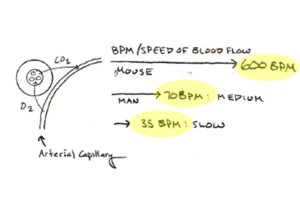 Obviously, faster blood flow through a capillary bed will deliver more oxygen to cells.
Obviously, faster blood flow through a capillary bed will deliver more oxygen to cells.
The new critical thought is realizing the cell itself must be able to receive the oxygen into itself faster somehow. This is where the type of fatty acids matter, because they change how a cell controls the rate of oxygen passing into itself… somehow.
This somehow is explained below.
First, imagine an 8 lane highway has 8 tollbooths – or gates – to allow for faster passage of a heavy stream of cars to the other side.
Obviously if only one gate was available traffic would pass through to the other side slower.
Now imagine the cells of different animals have either less or more gates responsible for letting oxygen pass into the cell – similarly to the way the number of available gates determines the rate of passage of cars through the tollbooths.
Do you see how structure determines function?
- The mouse’s cells have more ‘cell gates’ for allowing oxygen to pass into the cells compared to humans.
- A mouse consumes 27.32 ml/min O2 per kg.
- A human consumes 5.12 ml/min O2 per kg.
Thus much more oxygen passes into the cell for greater rates of combustion and heat production in tiny mammals. Hence the increased metabolic rate in small mammals is simply a matter of consuming relatively more oxygen and fuel, which requires two essential conditions:
1. The supply of fuel and oxygen is made ‘faster’ through increased blood velocity and heart rate.
2. The greater reception of oxygen is made possible by altering the structure of the cell.
The human brain is (for practical purposes) comparable to a mouse’s cells because brain cells consume more oxygen than any other cell at rest. Obviously this means the brain is made of the type of fatty acids that contain more ‘gates’.
Anywhere more oxygen is used, the potential for increased oxidative stress and cell damage also increases. Thus It is no coincidence that the brain is an ‘excellent candidate’ for studying oxidative damage due to its fatty acid makeup.
What Makes a Cell Gate? (See Grand Schematic)
The rest of this presentation is conducted privately.


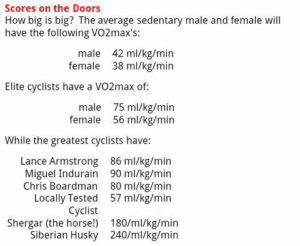

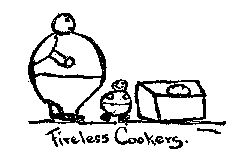
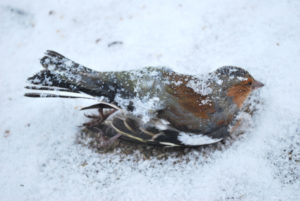
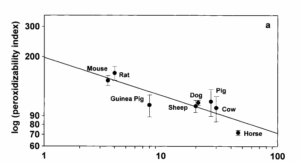
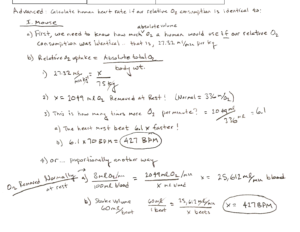
Great line up. We will be linking to this amazing post on our site.
Keep up the good writing.
Hello , I do believe this is a superb blog. I stumbled upon it on Yahoo ,
I’ll come back once again.
This actually answered my problem, thank you!
Thank you for the effort, keep up the good work Great work.
Excellent site you have here but I was wanting to know if
you knew of any discussion boards that cover the same topics discussed here?
I’d really love to be a part of community where I can get opinions from other
knowledgeable people that share the same interest. If you have any suggestions, please let me know.
Thank you!